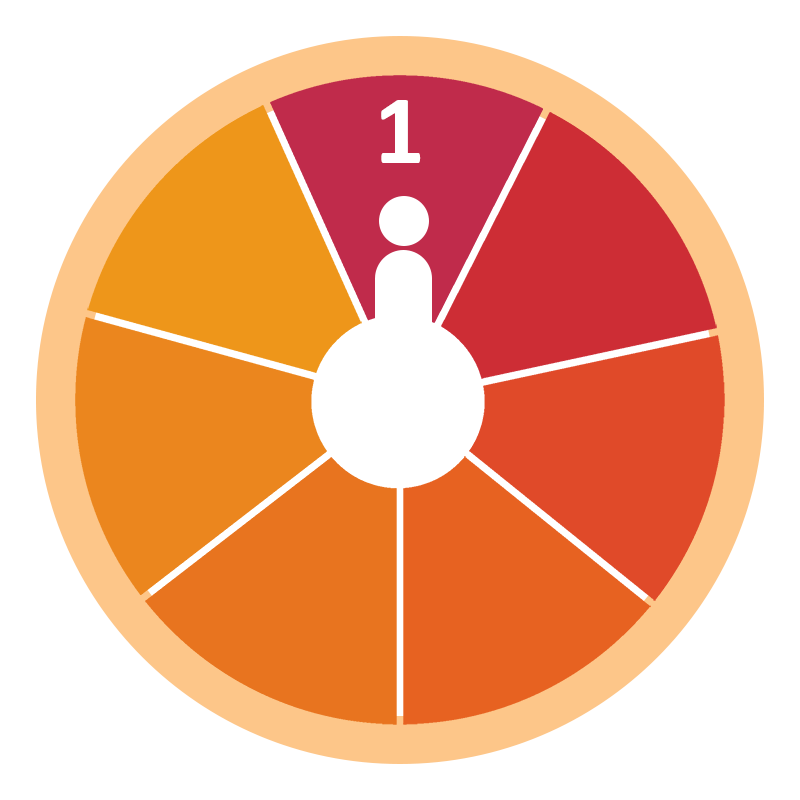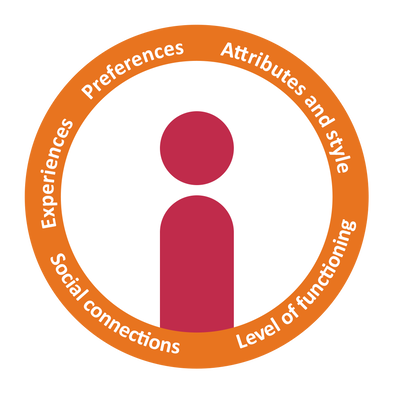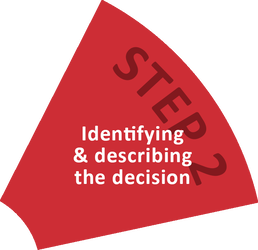Supporters need to have good engagement with the person.
Knowing the person includes:
- Knowing all aspects of the person
- Having a sense of their self-identity or self-concept – who they are and how they feel about themselves.
This talk video is an introduction to Step 1.
Getting to Know a Person - Talking Isn't Enough
Too often, people try to get to know a person with cognitive disability only through talking with them. Alternatively, if the person is not able to talk, then other people are sought to talk about them, or for them.
Asking the person what they want is not equivalent to knowing the person. This is because the person might:
- Not understand you, or
- Not be aware of how to articulate a response, or
- Say what they think you want to hear
Make sure your knowledge of the person isn’t superficial. You will come to understand, or have already experienced, that it is difficult to support someone with decision making when you do not know them well.
Elements to Knowing a Person
Supporters need to find different ways of getting to know the person.
There are creative ways of engaging and communicating which include, asking open-ended questions, having experiences with the person, observing them, recognising their hobbies and interests, encouraging them to tell their story while actively listening.
We get to know people in different ways. There are different approaches that we can use in order to more fully understand a person.
|
Figure 3 summarises the basic elements that will lead you to knowing a person.
Knowing the person includes knowing about their:
Different people will have different knowledge of the person and will provide support in alignment with that information.
|
This video shows an example of knowing the person.
Watch the video and then answer the questions. Write in the downloadable workbook located in the Resources section.
Josh is excited about his trip to Newcastle, but then changes his mind about going just as the group is about to leave.
- Why don’t Josh’s support workers take him home as he requests?
- Leon phones Pete. What does Leon realise about Josh’s preferences from that conversation?
- Explain whether you feel that Josh’s support workers know him well enough to support his decision making?
This video shows an example of knowing the person.
Watch the video and then answer the questions. Write in the downloadable workbook located in the Resources section.
- What are some of the reasons why Sarah’s mother, Lesley, would be unaware of her relationship with Ron?
- Explain how having assumptions about a person would affect the way you support them to make decisions.
- Think about someone that you support. Describe how you have got to know them.
Select the button below to learn about Step 2 Identifying & describing the decision.





